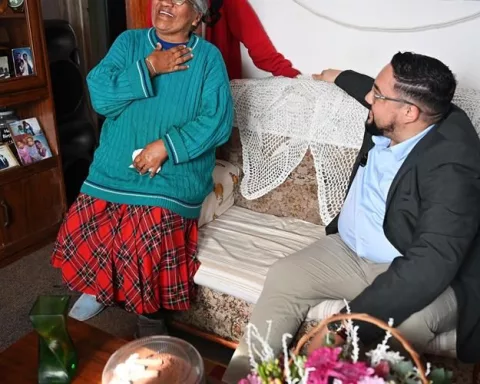The Western Cape’s Tygerberg Hospital, Groote Schuur Hospital, and Red Cross War Memorial Children’s Hospital have performed almost 10,000 heart surgeries in response to South Africa’s ongoing struggle against heart disease. Heart disease remains the primary cause of death in South Africa, and these hospitals are crucial in addressing this healthcare crisis. The success of these interventions is dependent on the collaboration of multidisciplinary teams across the hospitals, providing patients with the best possible outcomes.
The relentless dedication of Tygerberg Hospital (TBH), Groote Schuur Hospital (GSH), and Red Cross War Memorial Children’s Hospital (RCWMCH) has been crucial in saving numerous lives since 2013. These hospitals have performed almost 10,000 heart surgeries in response to South Africa’s ongoing struggle against heart disease. Despite the fact that healthier lifestyle choices and medications can help prevent and manage many conditions, specialized surgical interventions are often necessary for advanced cases.
The Importance of Heart Health in South Africa
Heart health receives annual recognition on World Heart Day, September 29th. Our hearts are constantly working, beating approximately 115,200 times per day and roughly three billion times by the age of 80. As heart disease remains the primary cause of death in South Africa, the three major hospitals in the Western Cape are crucial in addressing this healthcare crisis, particularly considering the province’s quadruple disease burden.
Tygerberg Hospital has garnered accolades for its Mitral Valve Repair surgery, which includes procedures such as reattaching valve leaflets, patching heart valve holes, or removing excess tissue. In 2015, the hospital performed the first mitral valve repair in the province using a patient’s own blood vessels. This groundbreaking technique enabled the establishment of a minimally invasive mitral repair program, although most patients still require open surgery.
Innovations and Complex Cases
With an increasing number of complex procedures due to an aging patient population with intricate medical conditions, Professor Jacques Janson, Head of the Division of Cardiothoracic Surgery at Tygerberg Hospital, takes pride in his team’s ability to achieve outcomes that rival global standards. He is motivated by seeing patients receive a second chance at life.
One such patient, Tinotenda Naini, a 23-year-old from Hermanus, underwent surgery at TBH to repair her aortic valve and replace her aorta after suffering an acute aortic dissection while pregnant. Naini’s surgery not only saved her life but also allowed her to avoid blood thinners, ensuring a brighter future for her and her newborn child.
The work of Professor André Brooks, Head of the Clinical Unit of Cardiothoracic Surgery at Red Cross War Memorial Children’s Hospital and a cardiothoracic surgeon at Groote Schuur Hospital, exemplifies the vital collaboration between the three institutions. GSH specializes in adult congenital surgeries, while RCWMCH was the first pediatric unit in the country to perform specialized procedures like the REV (Reparation a l’Etage Ventriculaire) procedure.
Teamwork and Life-Changing Successes
According to Prof. Brooks, the success of these interventions is dependent on the teamwork of multidisciplinary teams across the hospitals. Cardiologists, anesthetists, perfusionists, and ICU specialists collaborate to provide patients with the best possible outcomes.
Zukiswa Mnukwa, the mother of a 5-year-old patient who recently underwent a ventricular septal defect repair at RCWMCH, is a recipient of this collaborative approach. Mnukwa expressed her appreciation for the support and transparency provided by the surgeons and nurses during a challenging time in her family’s life.
Melanie Petersen, a 35-year-old from Mitchells Plain, is another individual who has experienced the life-changing power of heart surgery. Born with an atrial septal defect, Petersen only sought medical attention when she began experiencing shortness of breath and an increased heart rate during everyday tasks. After undergoing surgery at Groote Schuur Hospital, Petersen’s life has been transformed, allowing her to enjoy everyday activities without fatigue.
The Western Cape’s three major hospitals continue to make a significant impact on the lives of countless heart patients, offering expertise, compassion, and hope to those confronted with the daunting reality of heart disease. As the battle against heart disease continues, their contribution to the well-being of the South African population remains invaluable.
1. How many heart surgeries have Western Cape’s hospitals performed?
They have performed almost 10,000 heart surgeries.
2. Why are these hospitals crucial in addressing the healthcare crisis caused by heart disease in South Africa?
Heart disease is the primary cause of death in South Africa, and these hospitals play a vital role in combating this healthcare crisis.
3. How do these hospitals achieve successful outcomes with their interventions?
The success of these interventions is dependent on the collaboration of multidisciplinary teams across the hospitals, providing patients with the best possible outcomes.
4. What is Tygerberg Hospital’s Mitral Valve Repair surgery?
It includes procedures such as reattaching valve leaflets, patching heart valve holes, or removing excess tissue. In 2015, the hospital performed the first mitral valve repair in the province using a patient’s own blood vessels.
5. Who is Professor Jacques Janson, and what is his role in the Western Cape’s hospitals?
He is the Head of the Division of Cardiothoracic Surgery at Tygerberg Hospital and takes pride in his team’s ability to achieve outcomes that rival global standards.
6. Who is Tinotenda Naini, and what was her surgery at TBH?
She is a 23-year-old from Hermanus who underwent surgery at TBH to repair her aortic valve and replace her aorta after suffering an acute aortic dissection while pregnant.
7. How do the three major hospitals in the Western Cape collaborate to address heart disease?
They have multidisciplinary teams across the hospitals, with cardiologists, anesthetists, perfusionists, and ICU specialists collaborating to provide patients with the best possible outcomes.
8. What are some examples of individuals who have experienced the life-changing power of heart surgery at Western Cape’s hospitals?
Zukiswa Mnukwa’s 5-year-old underwent a ventricular septal defect repair at RCWMCH, and Melanie Petersen underwent surgery at Groote Schuur Hospital for an atrial septal defect, allowing them to live their lives without fatigue.








